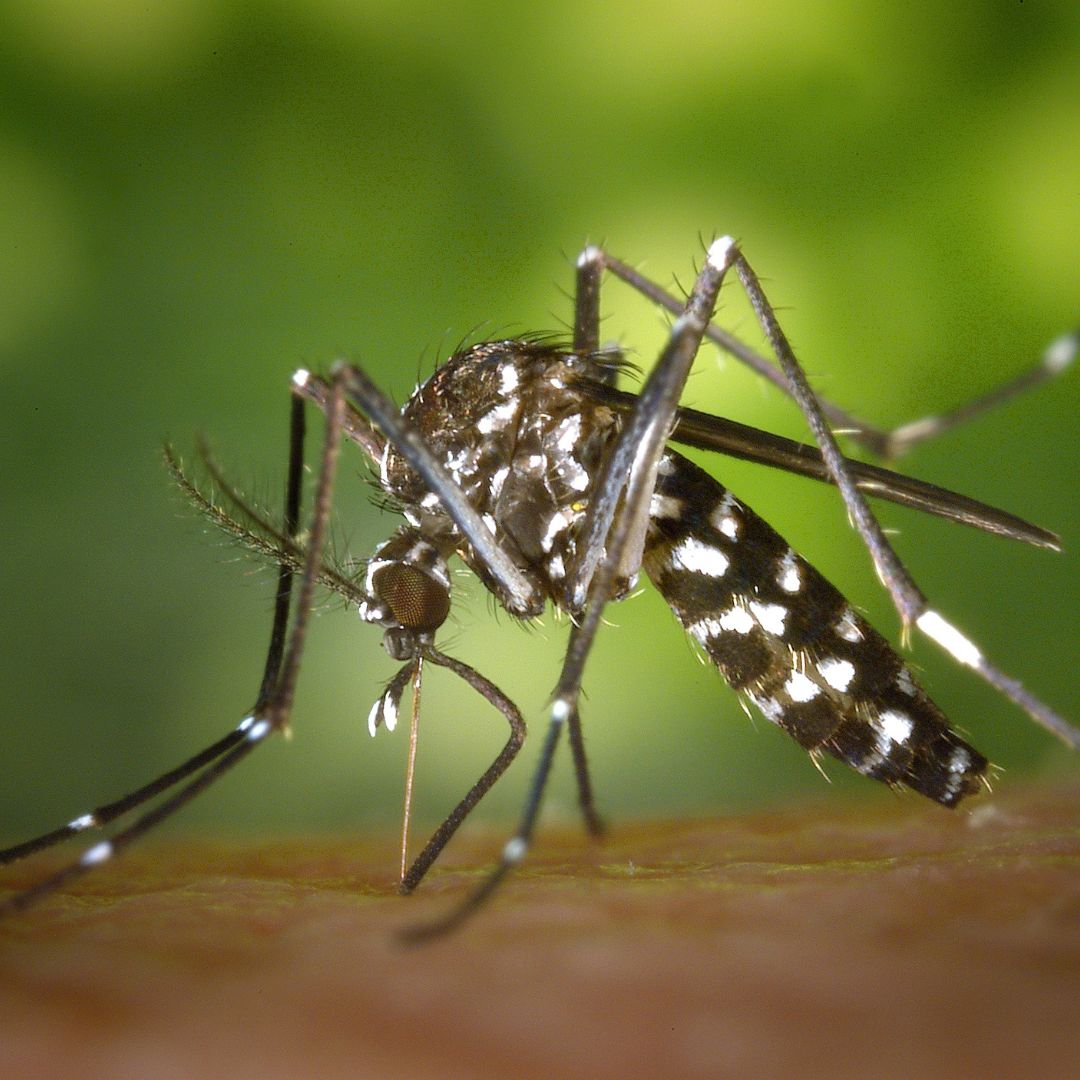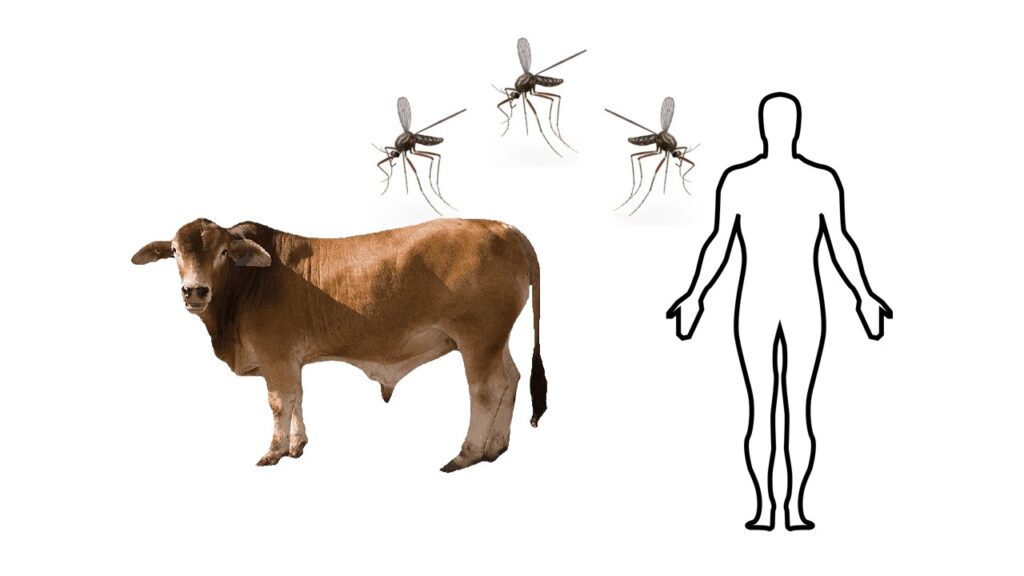Exploring the Impacts of Domesticated Animals on Mosquito-borne Disease Transmission

Introduction
Mosquitoes are widely regarded as the most perilous creatures on the planet. They have been implicated as transmitters of diseases such as malaria, dengue fever, West Nile, Zika, Japanese encephalitis, chikungunya, and yellow fever (Olagunju, 2023). Unfortunately, there is a lack of vaccines for the treatment of most of these diseases. Therefore, vector control is the predominant approach for managing these diseases.
Livestock rearing is a crucial and indispensable component of metropolitan settings in many low- and middle-income countries. Its primary function is to provide residents with nutritious food and create livelihood opportunities. Nevertheless, research has demonstrated that this activity impacts the spread of mosquitoes and the transmission of the diseases they carry.
Mosquitoes obtain blood from both human and non-human hosts, such as livestock. Scientists have conducted thorough investigations into the relationship between livestock and mosquitoes, emphasising that livestock play a crucial role in the feeding patterns of mosquitoes that can transmit diseases. Nevertheless, there are several unresolved issues regarding the influence of animal husbandry on the occurrence of mosquito-borne illnesses (MBDs).

Case Studies
Malaria
In their study, Hasyim et al. (2018) discovered that the presence of pigs, goats, and sheep increased the likelihood of contracting malaria. The presence of these animals may likely have contributed to an increase in the number of carriers for Plasmodium species. Meanwhile, Morgan et al., (2023) found that owning cattle in the Democratic Republic of Congo is associated with a lower risk of contracting Plasmodium falciparum infection. Geographic and contextual factors may influence the relationship between livestock ownership and malaria risk, as seen in the different study locations. Also, different livestock species may have varying impacts on malaria transmission.
Rift Valley Fever Virus
Sumaye et al. (2015) found that households engaged in cattle farming have a higher likelihood of having at least one individual who has previously contracted Rift Valley Fever (RVF). Mosquitoes residing in close proximity to livestock have the potential to contract the virus from affected animals and subsequently transfer it to humans.
Japanese Encephalitis Virus (JEV)
Pigs are known for their ability to attract mosquitoes and serve as amplifying hosts for JEV. According to Lindahl et al., (2012), raising pigs increases the likelihood of the virus transmission, as well as the number of mosquitoes that transmit these viruses.
West Nile Virus (WNV)
Ruminant animals in Egypt exhibited WNV antibodies, indicating a high prevalence of the virus. There was significant variance in the prevalence rates across the studied species. Selim & Abdelhady (2020) observed varying rates of WNV in cattle, buffalo, camels, sheep, and goats. This demonstrates that these animals have the potential to serve as sentinels for WNV.
Recommendations
Strategically positioning animals, like cattle in close proximity to human populations can function as a trap to reduce the population of disease-carrying mosquitoes and hence limit the transmission of mosquito-borne diseases (MBDs). Also, placing deadly traps, such as mosquito traps, near animal populations can effectively capture and kill disease-carrying mosquitoes, reducing the risk of MBD transmission. Furthermore, the use of endectocides in cattle treatment can serve as a valuable supplement to existing vector management efforts. These systemic insecticides, ingested by mosquitoes feeding on treated animals, can significantly reduce mosquito populations and prevent MBD transmission.
Conclusion
Livestock rearing has both beneficial and detrimental impacts on the spread of MBDs. Mosquitoes rely on them for blood meals, and the presence of livestock can increase the number of mosquito breeding sites, thereby affecting the closeness of disease-carrying insects to humans. Therefore, researchers must integrate the One Health strategy to effectively control and prevent MBDs.
References
Olagunju, E. A. (2023). Is the presence of mosquitoes an indicator of poor environmental sanitation? Journal of Water and Health, 21(3), 385-401.
Hasyim, H., Dhimal, M., Bauer, J., Montag, D., Groneberg, D., Kuch, U., & Müller, R. (2018). Does livestock protect from malaria or facilitate malaria prevalence? A cross-sectional study in endemic rural areas of Indonesia. Malaria Journal, 17, 302.
Morgan, C. E., Topazian, H. M, Brandt, K., Mitchell, C., Kashamuka, M. M., et al. (2023). Association between domesticated animal ownership and Plasmodium falciparum parasite prevalence in the Democratic Republic of the Congo: a national cross-sectional study. Lancet Microbe, 4, e516–23.
Sumaye, R. D., Abatih, E. N., Thiry, E., Amuri, M., Berkvens, D., & Geubbels, E. (2015). Inter-epidemic acquisition of Rift Valley Fever Virus in Humans in Tanzania. PLoS Neglected Tropical Diseases, 9(2), e0003536.
Lindahl, J., Chirico, J., Boqvist, S., Thu, H. T. V. T. V., & Magnusson, U. (2012). Occurrence of Japanese Encephalitis Virus Mosquito Vectors in Relation to Urban Pig Holdings. American Journal of Tropical Medicine and Hygiene, 87(6), 1076–82.
Selim, A., & Abdelhady, A. (2020). The first detection of anti-West Nile virus antibody in domestic ruminants in Egypt. Tropical Animal Health and Production, 52(6), 3147-3151.

Emmanuel Ajibola Olagunju
Emmanuel Ajibola Olagunju holds a Bachelor’s degree from Ladoke Akintola University of Technology, Nigeria. His academic journey is driven by a profound passion for Medical Entomology and One Health. Emmanuel's research interests revolve around the study of mosquitoes and other medically significant insects, with a specific focus on vector biology and ecology. He aspires to pursue graduate studies in these areas, further exploring the intricate relationships between humans, animals, and the environment through the lens of One Health.
